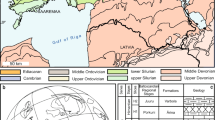Abstract
Carl Vogt (1817–1895) was an important zoologist and geologist who taught a physically oriented materialism in the middle of the nineteenth century.
Together with A. v. Humboldt, E.A. Roßmäßler, A.E. Brehm and M.J. Schleiden he was a pioneer of the popularisation of natural science. Vogt emphasized the enlightenment function of the natural sciences in the fight against religion and superstition. He spent a two year period with Georg Herwegh and Michail Bakunin on the Mediterranean coasts of France and Italy investigating the anatomy and morphology of ctenophores, siphonophores, worms and other low organized marine animals. Vogt described the results in his bookOcean und Mittelmeer (1848),—a high level publication. It contains reflections on politics, philosophy, the relationship between arts and natural sciences and contemporary painting. His brilliant descriptions of these animals became very important for the biologically oriented aesthetics of nature from the middle of the nineteenth century, especially that of Ernst Haeckel.
Similar content being viewed by others
Literatur
Bölsche, Wilhelm: “Erinnerungen an Karl Vogt”.Neue Deutsche Rundschau, Jg. 8, H. 6 (Juni 1897), S. 551–561. S. Fischer.
Chun, Carl:Die Ctenophoren des Golfes von Neapel und der angrenzenden Meeres-Abschnitte. Eine Monographie, hrsg. von der Zoologischen Station zu Neapel. Wilhelm Engelmann: Leipzig 1880.
Kockerbeck, Christoph:Ernst Haeckels “Kunstformen der Natur” und ihr Einfluß auf die deutsche bildende Kunst der Jahrhundertwende. Studie zum Verhältnis von Kunst und Naturwissenschaften im Wilhelminischen Zeitalter. Peter Lang: Frankfurt, Bern, New York 1986.
Kockerbeck, Christoph: “Biologische Kunsttheorien im 19. Jahrhundert: ‘Die Ästhetik der Tierwelt’ von Karl Möbius”.Biologisches Zentralblatt, 112 (1993), Heft 2, S. 136–140. Gustav Fischer: Jena.
Krause, Ernst: “Carl Vogt”.Allgemeine Deutsche Biographie. Bd. XL. S. 181–189. Leipzig 1896.
Krauße, Erika:Ernst Haeckel. Biographien hervorragender Naturwissenschaftler, Techniker und Mediziner, Bd. 70. BSB B. G. Teubner: Leipzig 1984.
Mann, Rosemarie: “Ernst Haeckel, Zoologie und Jugendstil”.Berichte zur Wissenschaftsgeschichte, 13 (1990), S. 1–11. VCH: Weinheim.
Vischer, Friedrich Theodor:Ästhetik oder Wissenschaft des Schönen. Zweiter Teil. Das Schöne in einseitiger Existenz, hrsg. von Robert Vischer, 2. Auflage. Mayer & Jessen. München 1922.
Vogt, Carl: “Physiologische Briefe für Gebildete aller Stände. Zwölfter Brief: Nervenkraft und Seelentätigkeit” (1847).Vogt, Moleschott, Büchner. Schriften zum kleinbürgerlichen Materialismus in Deutschland. Eine Auswahl in zwei Bänden, hrsg. Dieter Wittich. Bd. 1. S. 14–24. Akademie: Berlin 1971.
Vogt, Carl:Ocean und Mittelmeer. Reisebriefe. Zwei Bände. J. Rütten: Frankfurt am Main 1848.
Vogt, Carl:Aus meinem Leben. Erinnerungen und Rückblicke. Erwin Nägele. Stuttgart 1895.
Author information
Authors and Affiliations
Rights and permissions
About this article
Cite this article
Kockerbeck, C. Zur Bedeutung der Ästhetik in Carl Vogts populärwissenschaftlichen ReisebriefenOcean und Mittelmeer (1848). NTM N.S. 3, 87–96 (1995). https://doi.org/10.1007/BF02913700
Issue Date:
DOI: https://doi.org/10.1007/BF02913700




